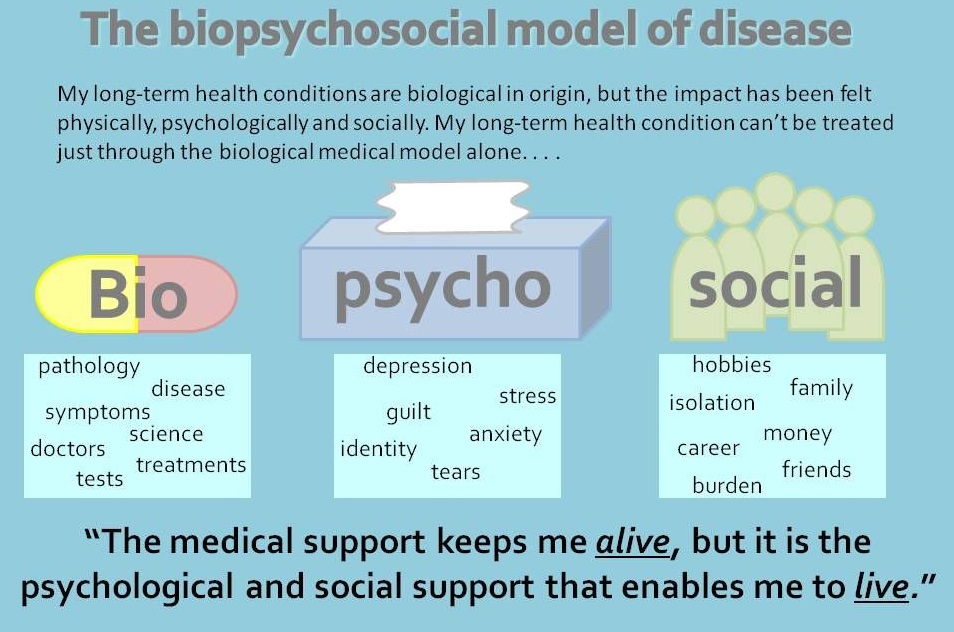
Biopsychosocial Assessment – Definition, Criteria and FAQs
The biopsychosocial agreement, an assessment typically administered by therapists and coaches at the beginning of therapy, estimates biological, psychological, and sociological factors contributing to a client’s query. It’s considered a holistic evaluation, looking at a customer on all varying levels.
The biopsychosocial (BPS) arrangement is an approach that highlights the consequence of a systemic sense of somebody and integration of biological, emotional, and sociocultural determinants on human improvement and functioning.
It’s considered a holistic assessment, studying at a client on all unconventional levels. The biopsychosocial interview is utilized because problems usually prepare to survive in a vacuum. They all influence each other in different ways. It’s not enough to look at a person; you have to look at his or her environment as well.
The biopsychosocial interview is employed because difficulties usually don’t exist in a vacuum. They all influence each other antagonistically. It’s not enough to look at a person; you have to look at his or her environment as well. Here are some other examples of how physiological, psychological, and social representatives are all interrelated:
- Grandma Mary Lou is displaying anger that makes her family members nervous. After attending biopsychosocial, the family therapist can understand that Mary Lou may be experiencing early madness or Alzheimer’s (bio) symptoms, making her so frustrated and angry (psycho) that she can’t remember things she once could.
- Ernie is bullying other kids at school (social). After the clinical social worker conducts a biopsychosocial interview, she realizes that his father ridicules Ernie and that he’s displacing anger (psycho) towards his father on kids on the playground.
- Michelle has just lost custody of her daughters due to her alcohol abuse (bio) and encouraging drunk with the children in the car. When the subconscious health therapist administers the biopsychosocial interview, he discovers that Michelle drinks because she is discouraged (psycho) and is abused by her autocratic husband (social and familial).
How to Conduct a Biopsychosocial Assessment?
The biopsychosocial model is intended to aid the therapist with clinical formulation by specifically addressing the main aspects contributing to the client’s overall mental health: biological, social, and psychological. The aim of the clinical formulation is two-fold:
- Know how the client got to be the way he or she is.
- Determine the better way of assisting the client.
Because of the wideness of a biopsychosocial assessment, most therapists use a template to classify the assessment process. While the order of some of the assessment components may differ from one template to the next, there is a common agreement on the content that should be included in a biopsychosocial assessment. Let’s move to the section to know how to write an assessment.
How Do You Write a Biopsychosocial Assessment?
As a social worker included in administering clinical assessment and intervention with kids and parents, I will outline my concerns over the efficiency of our use of the name “biopsychosocial” to represent the content of work undertaken in conventional child and adolescent mental health environments or counseling work involving families in the child welfare system. My involvement in service delivery over thirty years has included work as a clinical social worker at an MSW level in a wide variety of settings, including child welfare, mental health crisis assessment, adult psychiatry, and adolescent and family counseling.
My interest in the bio-psycho-social model, in particular, arose over the past six years, working closely with psychiatrists in a major psychiatric hospital, primarily intervening with individuals who have severe personality disorders in the Cluster B spectrum. In that background, I grew to respect some of the forces of the so-allegedly ‘medical form.’ I observed that some of the physiological and psychological evaluation tools and practices used to analyze patients’ history and behavior were often of considerable assistance in understanding the messages encoded in those behaviors. Having been trained as a social worker, I knew that the medical model’s social work critique tends to devalue those tools and practices that I was learning from and finding useful.
On the other hand, I was aware that my profession has some history of rejecting or underestimating the need for incorporating the biological and psychological in favor of a frequently exclusive emphasis on the social. This commentary aims to urge inclusivity and complexity – that is, the actual utilization of all three components by all practitioners, regardless of their professional origin or training. This contribution’s focus is to use case examples to call for such inclusivity, particularly the need for conventional mental health practice to be enriched by a broader application of the ‘social’ in the bio-psycho-social.
 Biopsychosocial Assessment Criteria
Biopsychosocial Assessment Criteria
First, let’s look at the natural element of this assessment. The biopsychosocial’ natural entails inquiring about medical or genetic issues, age, developmental milestones, or physical symptoms. Items targeting the ‘bio’ aspect of the biopsychosocial assessment may be:
- Do you drink or do drugs? How often?
- Do you possess personal or family records of drug or alcohol abuse?
- Do you have class records of suicidal or destructive ideations (creation of beliefs and concepts)?
- Do you have any medical problems that are negatively affecting your life?
- Are you on any medications? If so, what are they?
The Biological psychological social model was independently imagined by George Engel in 1977, implying that to know a person’s pathological condition. It is not solely the natural circumstances to count but including the psychological and social aspects.
- Bio (physiological pathology)
- Psycho (thoughts, emotions, and behaviors before-mentioned as psychological torment, fear/avoidance beliefs, current coping purposes, and attribution)
- Social (socio-economical, socio-environmental, and influential factors such as work problems, family circumstances, and interests/distribution)
This model is commonly used in continuous pain. A query is a psychophysiological response pattern that cannot be categorized into biological, psychological, or social factors separate. There are proposals that physiotherapy should integrate psychological treatment to address all elements comprising persistent pain experience.
Is biopsychosocial Assessment Essential?
Many therapists have already integrated several questions about biological and social factors in their intake questioning. Unfortunately, customers do not often get treated with comparable emphasis. In traditional therapy assessments, ranking psychological factors are the norm. While that remains essential, it does not take into account the impact that other aspects may have on a person’s mental health.
It has been clear over the decades that the mind, body, and environment do not work individually. Humans are affected by the interference of hundreds of factors. And it is virtually impossible to decide the exact influence of all those moving parts. It is only when we look at biological, psychological, and social facets equivalent that we can be grateful for their influences on human behavior.
However, BPS assessment is familiar with each domain’s important role in an individual’s complexity. An analysis that does not admit their importance is both wrong and incomplete. Hence, biopsychosocial assessment is necessary because it openly checks the holistic reality of human nature.
FAQs
Q: What are the three elements of the biopsychosocial paradigm?
A: According to the biopsychosocial model, the extensive interrelation of all three portions (biological, psychological, social) leads to a given result. Each component on its own is inadequate to lead definitively to wellness or illness.
Q: How long does a biopsychosocial assessment take?
A: The evaluator may also obtain erudition online or through public records connected to your criminal and civil legal history. Individual counseling sessions are intended to be 45-50 minutes in diameter.
Q: What does a psychosocial assessment consist of?
A psychosocial interview’s major components include identifying the patient, the chief disease, presenting illness, psychiatric records, medical/surgical history, medication list, alcohol and drug use, destruction risk assessment, family/social history, occupational history, and educational history.
Final Words
However, the bio-psychosocial model states that deep interrelation between the three aspects leads to important outcome. These three factors has its own impact. If you have any queries, feel free to comment to us, or you can consider your doctor for further assistance.


![MEDDIC [A B2B Sales Methodology]](https://www.thebigpicturemovie.com/wp-content/uploads/2023/01/MEDDIC.jpg)
